By Katherine Marshall, G20 Interfaith Association Vice President, World Faiths Development Dialogue (WFDD), Berkley Center.
This speech was initially delivered at the opening plenary of the 2015 G20 Interfaith Forum in Istanbul, Turkey.
– – –
A Kairos Moment?
Many (and I include myself), see in the present a Kairos moment. Kairos is one Greek notion of time and the term conveys a spiritual imperative. It has been invoked at special times in history and implies urgency, grace, and opportunity. Indeed, we face a moment of great urgency, with multiple crises across the world: violence in Syria, Iraq, Paris, and Beirut, but also Burundi, South Sudan, Philippines, Colombia, Kenya, etc., the refugee crisis that is likely to worsen, natural disasters, nagging concerns about economic prospects and inequality, and the looming challenges of climate change. There are the “silent tsunamis” of child and maternal mortality and street children. But there are also unparalleled opportunities to act, with so many immediate occasions where leaders come together: the G20, Paris COP21 approaching, the General Assembly’s approval of the Sustainable Development Goals (SDGs) in September, and many negotiations, public and behind the scenes, to address violent crises. Citizen movements calling for action are on the rise.
An important feature in what is happening is that different issues are coming together in new ways that challenge our understanding, obliging us to disentangle the threads, to establish links, and to appreciate their significance. In this complex interface of challenges, religious dimensions have new and vital importance and religious actors have new opportunities to act and influence.

Sustainable Development: The Contemporary Challenge
Linking the term “sustainable” with “development” shows how far the idea of development has moved from the way it was largely understood (in the 1950s, 60s), as a relatively simple concept of progress, largely grounded in economics, almost mathematical in understanding how change happened. Today the notion is appreciated far more broadly, and the fact that development must be linked to peace building and to environmental action if it is to be viable and thus “sustained” is more obvious. Even in its earlier forms, understandings of development were underlaid by a dual sense of social justice and a confidence that the common good would serve the interests of all but such understandings today are more complex and nuanced, including their many ethical dimensions. “Sustainable development” today thus describes a highly complex and interrelated set of challenges, with a host of institutions involved, embedded in the phenomenon of globalization, notions of global governance (and respective responsibilities), interstate relations, and social justice.
The central question for us here today is how religious factors fit in this broad challenge, also an immensely complex set of questions. Thus in looking at “sustainable development” we need to look to several disciplines, professions, academic traditions, and world views. My focus today is on the links among them: simplistically, the fields in question are economic and social development, peace building, environment, and their religious dimensions.
Two Illustrative Parables
During a difficult conversation long ago with a reluctant minister of a desert country, I asked him about the role of donkeys as we passed through a village where many donkeys were doing their jobs helping the community. His irritated answer, that there were none and they were unimportant, reflected the fact that the donkeys were invisible to this minister because they did not fit in his worldview generally and his understanding of agriculture and poverty more specifically. Similarly, we often fail to see patent realities when they do not fit our worldview, hence the frequent invisibility of religion in many development circles.
A conversation between a priest and an education economist about links between religion and education illustrated a similar communication challenge. The priest focused on exchanges around theological education, baffling the secular education specialist, while the specialist’s response to a question about engagement on curriculum – “we aim at values-free education” – caused the priest to wince. Both men had important points: ignoring theological education is a common omission, and ideology can distort education. But they failed to communicate across different ways of framing the issues. Their discordance illustrates many broader failures to engage across discipline and professional divides.
The Four Perspectives
The complex challenges of sustainable development are reflected in the need to link different approaches and world views. These include religious institutions and beliefs, international development thinking, peace building, and climate change. Each of these approaches and sectors faces governance challenges that in some respects amount to a crisis. Each dyad is complex (development/religion, climate change/peace building), the triads more so, and the whole still more complex yet essential to global challenges and agendas. The challenge and the imperative is to build stronger links among them.
International Development
We face a lot of “stuck in mud” thinking about development. An example is continued use of the very outdated terms “third world” and “developing countries” (as if the world is truly divided into three or two groups). More significantly, it has been decades since any intelligent practitioner thought economic growth alone would serve. There are, however, widely divergent, often jarring views about development, set against the backdrop of a complex, dynamic, multifaceted, field, with countless institutions at work. A core idea and reality is that (as Harry S. Truman said in his January 1949 Inaugural address): “For the first time in history, humanity possesses the knowledge and skill to relieve … suffering” of all people. Critiques of development ideas and institutions do need to take into account the enormous progress that has been made (notably on health and education), even as there are still vast gulfs between rich and poor. The SDG framework represents an important architecture, with 17 goals, 169 targets, and many more indicators that are being developed. It benefits from many lessons learned over the years. Its strengths include a focus on partnership, and reliance on the discipline of demanding results, measuring progress, and fixing accountability. The SDGs and the development profession more generally reflect important changes in development thinking that include the fact that private financial flows long ago passed official aid, wide recognition that participation must be a given, a focus on human capabilities (notably education and health), and awareness that no one model or recipe works everywhere.
Four important trends in approaches to sustainable development have particular importance for the discussion today:
(a) More emphasis on fragile states, where development is flagging and new approaches are needed;
(b) Rising concern about inequality and inequity. Wide gaps between rich and poor are increasingly obvious but solutions are far from clear;
(c) Unsatisfactory discussion around economic models. Many call for shared growth and sustainable growth but there are very different views about what this means and sharp differences about the viability of market systems (see for example Pope Francis’ Encyclical Laudato Si!); and
(d) Complex relationships of many development actors (notably faith actors) to human rights. Human rights is embedded in many development approaches: there is a “right to development”, to education, water etc. Women’s equality is a central issue for development thinking. But there are gaps in understanding: some ambivalence is reflected in a critique of the World Bank’s tendency to treat human rights as an “infectious disease”.
These four trends all have important religious dimensions but the integration of religion and development is still very patchy. In many circles religious actors and beliefs are largely invisible. There is concern about “instrumentalization”: using religion for development purposes or vice versa. In terms of religious freedom, I cannot recall an explicit discussion of religious freedom in countless discussions of development strategies, though on reflection it was an important facet of many topics including concerns about the welfare of minority populations and regional development.
Peace Building
In parallel to academic programs, institutions, and strategies for international development are a similar set that center on conflict resolution or, as it is better termed, peace building (peace is never just made; it must be built and preserved over time). Approaches here include peace negotiations and mediation, peacekeeping, post conflict programs (DDR – disarmament, demobilization, reintegration), and work on transitional justice and reconciliation. The sad fact that some 50 percent of conflicts recur has led to increasing focus on links between peace building and development as well as on reconciliation. Appreciating root causes and preventing conflict are increasingly central and clearly extend far beyond battlefields.
Yet there are very different views by many among peace building and development actors of the other. Put crudely, many development specialists might characterize peace building as all talk and meetings, leaving aside the “real issue” which is opportunity and education. A peace builder might characterize the development community as staying only in capital cities, focused only on money, while they hold tight to the pursestrings. This is sad because both are obviously necessary: they work for the same ends and are divided by absurd dichotomies.
There is growing interest in religious peace building, but still far too little. There is a need to focus on the complexities of religious roles in conflicts: again there are sharply different views: that religion is central or, in contrast, that religion is irrelevant. The truth is obviously complex with religion involved in most conflicts but always in complex ways. In peace building as in development work, religious actors are often ignored. There are many creative efforts that involve religious peace building, negotiations, trauma healing, reconciliation etc. These efforts involve thousands of actors, and include individual actions ranging to broad interfaith action. They are, however, too little known and appreciated. Challenging questions include who belongs at the table? An especially complex issue involves engaging religiously motivated women since formal religious institutions often exclude or largely ignore them.
Climate Change/Environment
A third set of approaches, disciplines, institutions, movements, and on the ground work centers on addressing the challenges of climate change. While there are obvious complementarities among development, peace building, and climate change, there are also discordances and some tensions. These center above all on different view of growth and social justice as well as priorities.
There are rich contributions of religious thinking and mobilization on climate change. Examples include advocacy and more specific work to address issues like extractive industries.
Ensuring a Place at the Table for Religious Actors
In sum, religious dimensions in all their complex dimensions were long largely invisible in discussions of development, peace building, and climate change. If a specific issue emerged (say a conflict involving religious tensions, exclusion or favoring of a specific religious community) it was cast in broader terms, perhaps framed by economic reasoning. Someone arguing for action on human rights including religious freedom, would need to show the economic benefit or cost of a religious freedom issue and recommended action.
Manifold complexities need to be recognized, especially the degree to which culture and religion are intertwined. There has been more focus on culture, for example in safeguards policies that address cultural heritage and property, but culture is sensitive, difficult to handle, with fears of imposing models and “western” values in the obvious necessity to “take culture into account”.
The following, however, are examples of issues that have emerged in policy discussions over the years, that have religious dimensions (especially religious freedom links):
1) Textbooks: Questions arise both as to the “narratives” and information in textbooks (that are often financed by external sources) and the proper roles of outsiders when they finance programs or offer technical assistance. At issue are narratives, stereotypes, and treatment of issues of religion.
2) HIV and AIDS: the evolving pandemic has a complex, rich history of challenge and transformation, where religious actors played prominent parts. Religious freedom per se was not part of the “narrative” but freedom of expression and navigating different views about proper policies and priorities very much were.
3) Gender roles (women especially, LGBTQ more recently). Women’s roles and measures to ensure equality have encountered opposition and support from religious figures. The case of law in Uganda (and other countries) on homosexuals presents a host of issues that can be defined in religious freedom terms, as can the interventions (official and unofficial) of outsiders: these include issues of discrimination and their explicit links to public health.
4) The Ebola crisis: religious awareness and initiatives came late to the game, and even then it was sub optimal, with poor coordination of numerous actors, failure to take fully into account the largest sources of social capital, impact of negative encounters. Protocols on safe burials were a “game changer”.
5) Human rights issues like child labor and labor rights more generally, for example in the 1997-99 East Asia crisis, forced more explicit consideration of human rights issues, though not as a religious freedom issue per se.
6) Ethnicity and religion (often intertwined): Appreciating the benefits of diversity and links to stability involved in plural societies, and the associated issues. There are benefits when religious leaders support a policy (girls in school, hand washing), harm when there is opposition
7) Regional strategies and minorities: regional development is a common development issue, often with religious dimensions, though rarely framed as such.
8) Family planning. Questions around contraception, framing of government policies, and of course abortion have religious and also religious freedom dimensions. They are notoriously complex, with application to individuals and to government policy.
Pointing to Key Barriers Among Fields and Approaches
1. Weak links among religious actors and those involved with development, peace building, and climate change have important negative consequences. Doubts among development institutions about engaging religion can be summarized with three Ds: religion can be seen as divisive (and complicated, political), dangerous (patriarchal, opposed to important development assumptions, theories of change and especially equal rights for women), and defunct (not a priority, belongs in private space). Discussions of these issues are rarely solely rational: one development colleague observed that he has never received so many confessions as in his work on religious dimensions of development. Religious actors have an equal array of doubts on development: fear of new colonialism and empire, development seen as economics driven, its effects are seen as negative, it is seen as devoid of ethics, and the institutions and language are an enigma (5 Es). There are similar gaps in understanding about the structures of institutions, their motivations, and their work on peace building and climate change.
2. Governance and religious roles: Governance challenges are central to the host of problems that sustainable development poses and religious dimensions are vital but too little taken into account. Obstacles center on “political prohibitions” and concerns about the role of the state, its obligations, and the widespread reality and perception of corruption. These are fundamental to development which is as much about policy choices, priorities, and focus on inclusion and equity as on any technical solution. They are equally relevant for peace building and climate change.
3. Proselytism: A major issue that links these topics, one that is raised as a concern in most world regions in one fashion or another, is proselytism WHEN LINKED TO DEVELOPMENT. That is because of imbalances of power that come with financial resources, insider and outsider. Sensitivity is related issue: can intervention cause harm?
4. Backlash on human rights. Human rights are central to sustainable development approaches though often the links are weakly specified. Religion and human rights have intertwined histories but there is an increasing tendency to see them as in tension or even opposed. Is religious freedom an integral part of human rights, or are there distinctions? Is it of a higher order, or not? The most obvious links (with associated tensions) are freedom of speech, rights to assemble. What are the limits of conscientious objection in different categories of action?
5. Gender roles: An example of tensions is on gender relations, where stereotypes hold, on one side, that religion is the problem in resisting fully equal rights, and on another that western feminists create the problem. In many settings questions about relationships between men and women and human sexuality are major points of contention.
6. Coordination and harmonization. There is a need and potential for far better coordination so that efforts add up to a greater whole but also resistance to coordination with the universal question: who coordinates?
– – –
Professor Katherine Marshall is a senior fellow at the Berkley Center for Religion, Peace, and World Affairs at Georgetown University. She serves as the vice president of the G20 Interfaith Association and executive director of the World Faiths Development Dialogue, and worked at the World Bank from 1971 to 2006, tackling development issues in the world’s poorest countries.


